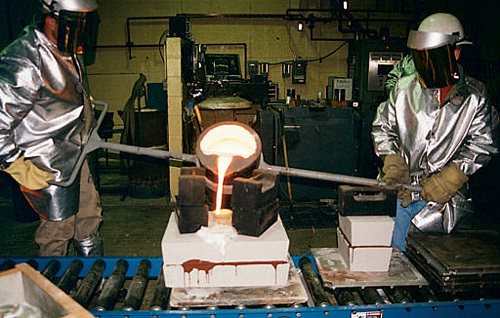|
Aluminum Glows
By
Judy Wood and Michael Zebuhr
March 1, 2006
This is from an email sent to Steven E. Jones, Wednesday, March 01, 2006
9:01 AM
-----Original Message-----
From: Judy Wood [woodj@clemson.edu]
Sent: Wednesday, March 01, 2006 8:01 AM
To: Jones, Steven
Cc: xxxx@clemson.edu; mzebuhr@clemson.edu; xxxx@clemson.edu
Subject: Glowing aluminum pictures
PURPOSE:
The purpose of this exercise was to demonstrate that aluminum does indeed glow. This work was conducted at Clemson University with Michael Zebuhr on 28 Feb 2006.
METHOD:
The aluminum (99.7%) is heated in a tungsten boat by electrical current
through the tungsten "boat" clamped at each end. The square
and rectangular pieces on the end are copper, with several rounds of aluminum
evaporations on them.
The aluminum wire segments are stacked in the tungsten boat. It's
not the clearest picture, but you can tell that the aluminum is a dull
color (oxidized?)
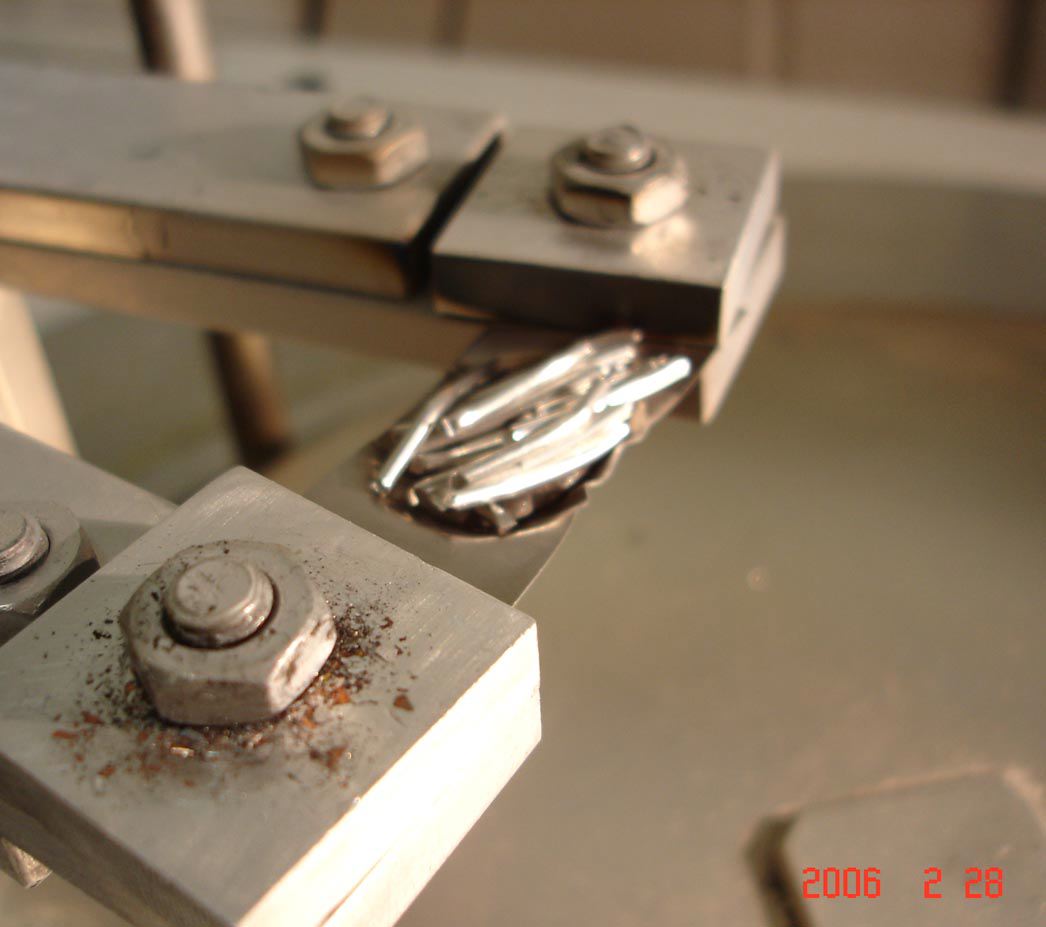
Figure 1: Aluminum wire segments in the tungsten boat before
heating.
Here, the Aluminum wire is beginning to bend over the edge. It
may not be obvious, but the boat is just beginning to glow. The aluminum
looks a little more shiny.
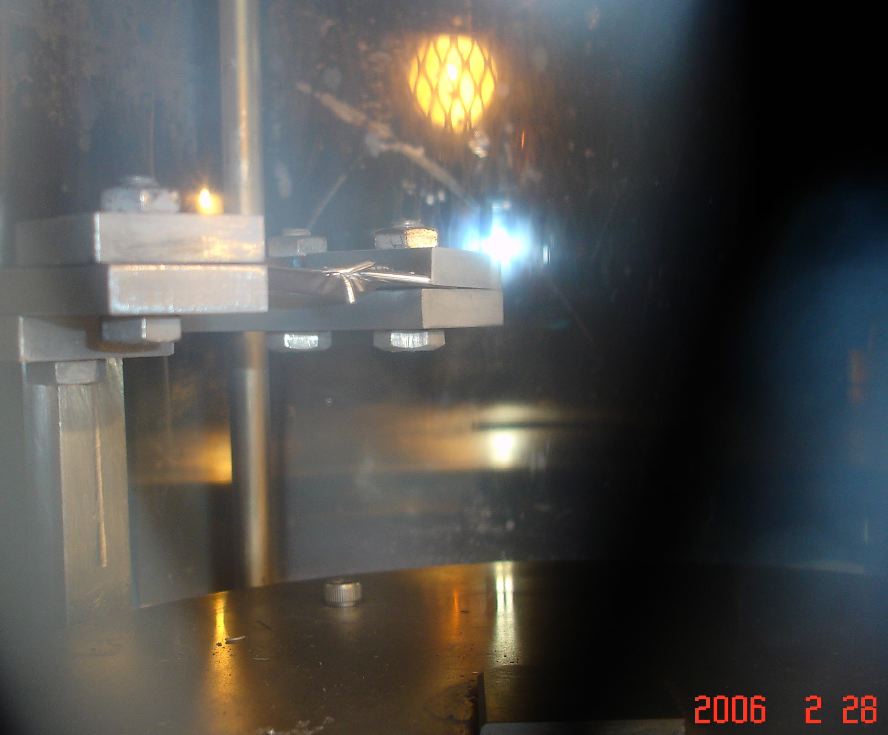
Figure 2: The aluminum begins to melt and bends over the edge
of the tungsten basket.
Notice that the aluminum has melted, or is about to melt, and still
appears silver. It looks like it dripped over the edge, but that's
just where the wire drooped over the edge. The thick piece of wire
that is hanging straight down looks more shiny than it did before it was
heated. This is true for all of the aluminum.
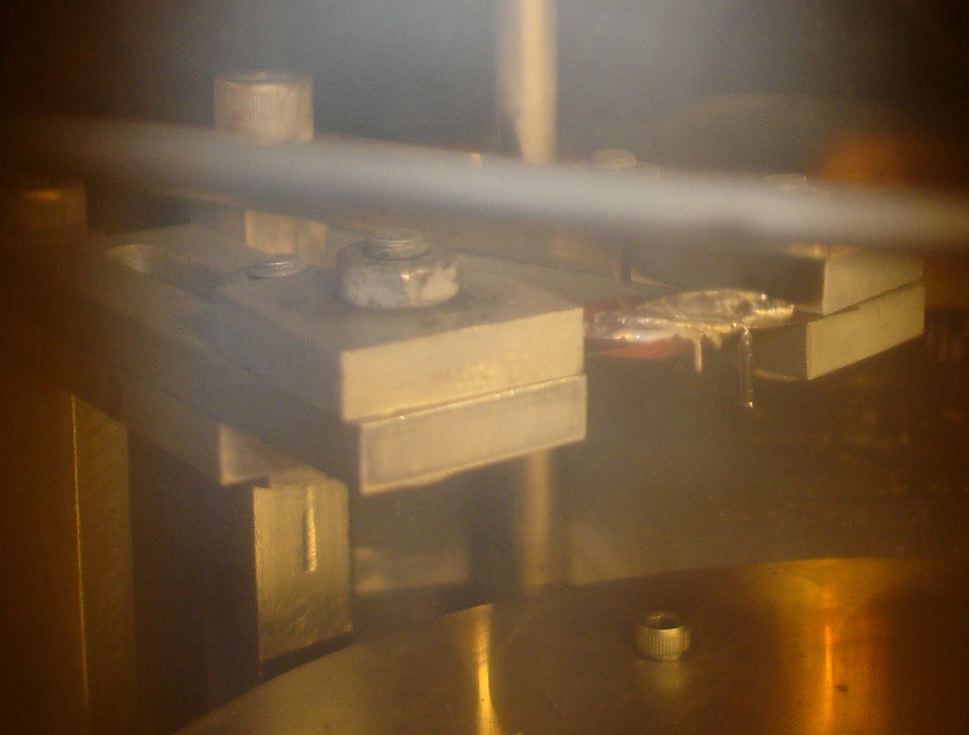
Figure 3: The aluminum has melted, except for the one segment
of wire hanging down. Notice that the tungsten basket is a beet red.
Yes, the aluminum is silvery gray at its melting temperature (660°C).
After melting, the aluminum forms a ball. (It looks like a rising
loaf of bread!) Notice that the drip hanging below (near the
right end of the boat) is glowing, yet has a more silver color than the
"bread loaf."
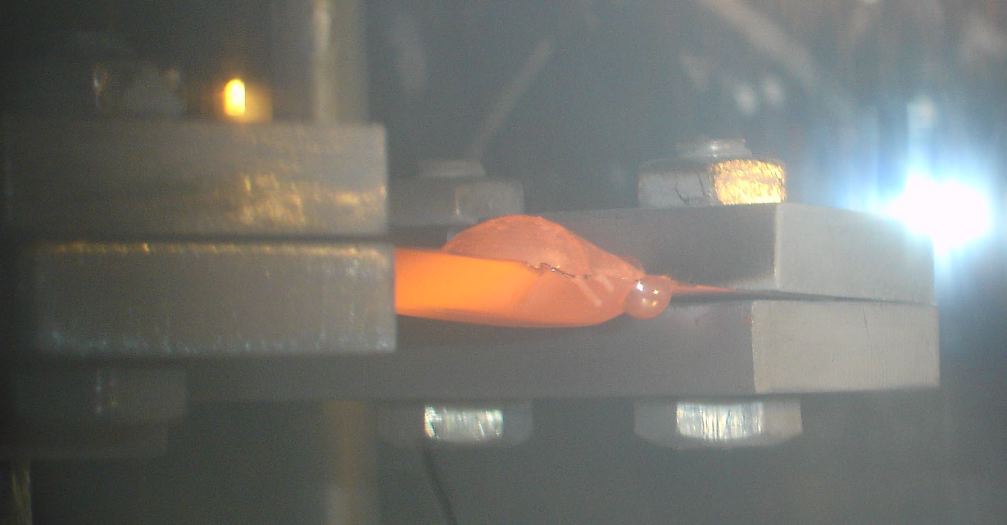
Figure 4: Aluminum is fully melted. The aluminum
in the tungsten boat is glowing. The drop of aluminum hanging below
the boat on the right (cooler) side looks a little silvery, but it also
has a dull glow.
Notice the drip on the under side, hanging down. The surface tension
seems to be fairly high. Notice that the drip hanging below
(near the right end of the boat) is glowing, yet has a more silver color
than the "bread loaf," indicating that it is slightly cooler than the aluminum
on the other side. Also, the tungsten boat this drop is hanging from
is a dark red.
Let's consider the evidence. Turn on a standard 60-Watt incandescent
light bulb and see if it has "low emissivity." The filament is almost
certainly made of tungsten. In the pictures Michael took of the glowing
aluminum, the aluminum is sitting on a tungsten "boat." The aluminum
has the same glow as the tungsten. So, we can conclude that the aluminum
and the tungsten have the same emissivity.
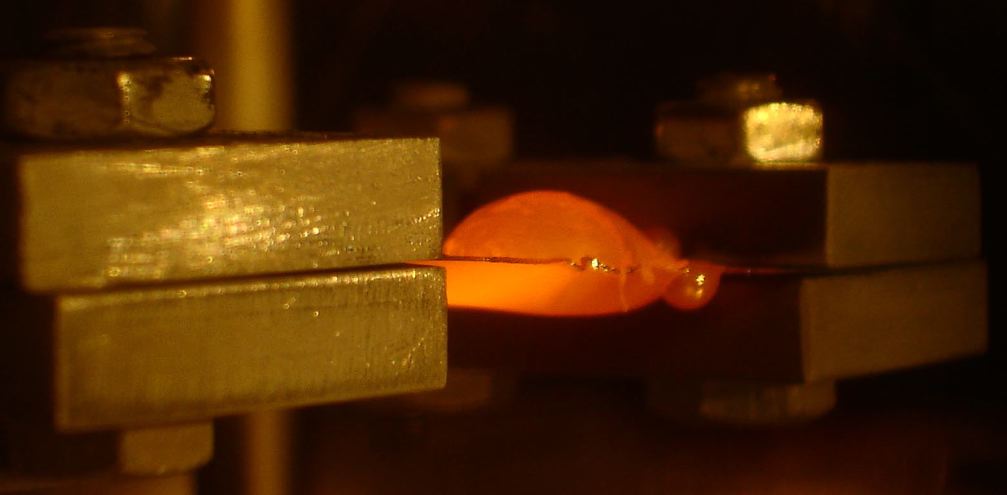
Figure 5: Aluminum fully melted
This is the same image I have in a video clip. The dark spot at
the top looks silver and dances around like it's boiling.
You may notice the darkened appearance around the copper block that
clamps the end. That's what I refer to as the high-pressure "evaporation."
What you see is from these experiments alone. Notice that the drip
hanging below (near the right end of the boat) is glowing, yet has a more
silver color than the "bread loaf."
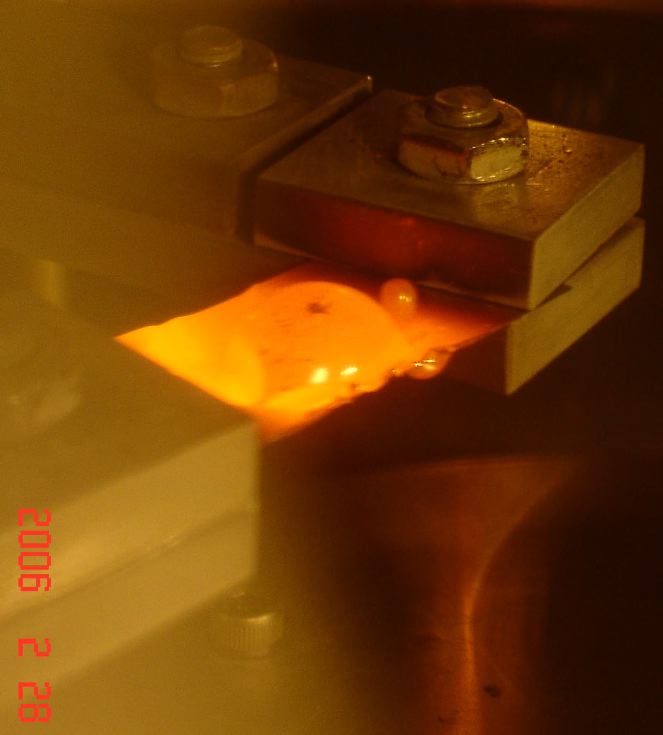
Figure 6: Aluminum fully melted
Here is where we abruptly turned down the current, cooling the tungsten
boat. The aluminum is still glowing. Note that the drip on
the under side, near right end, looks silver. I believe it looks
silver at a slightly lower temperature than the red glow, although it is
(just barely) melted.
In full atmospheric pressure, I think the surface may be more likely
to look silver (a) because of the temperature loss adjacent to the surface,
and (b) there may be some reaction with the air, just on the surface.
But that would only be an issue at the "just-barely-glowing temperatures.
The "rising loaf of bread" appearance is interesting. This is
caused by the low-pressure environment, but may exist in atmospheric pressure,
too, as the result of high surface tension.

Figure 7: The molten aluminum is glowing a lot more than the
tungsten basket, showing that the glowing appearance can't be from a reflection.
Other examples of glowing molten aluminum.
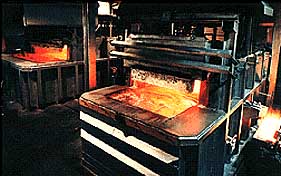
| Figure #8: This image is from an aluminum casting website.
The molten aluminum is glowing. The room is at atmospheric
pressure.
Source:
Aluminum casting |
back to top
|
Molten Aluminum
|
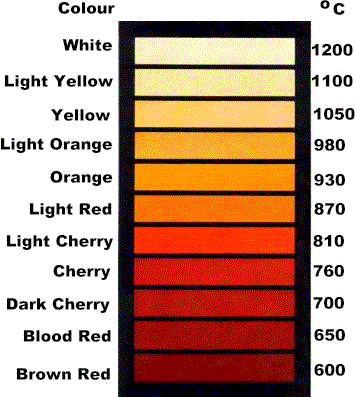 |
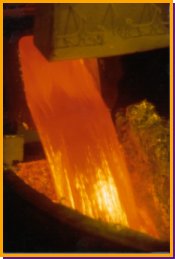 |
| Figure #9a: Temperature chart |
Figure #9b: Molten aluminum at approximately 930°C - 1100°C.
Source:
The International Aluminium Institute |
back to top
Figure #9c: The team casts a crankcase from aluminum.
PHOTO BY JUDY HAY, source: Popular Mechanics |
| from the book: Build an Oil Fired Tilting Furnace, by: Steve Chastain
|
 |
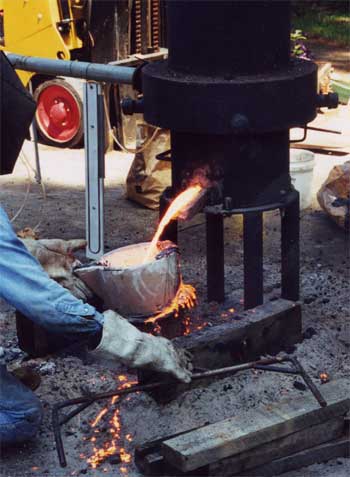 |
back to top
Figure #10a,b These images are from a book showing how to melt aluminum and separate it from the slag. It has been discussed that these two pictures may not be aluminum, but no one is absolutely sure.
It is not possible to identify the type of material that is flowing simply by looking at a photo, as demonstrated by Steven Jones in analyzing the photos on this page, 8/10/06. (mp3)
On Jim Fetzer's radio show, Steven Jones identified this material as looking "silvery," implying that he, too, thought it could be aluminum.(mp3) However, the point is that no one is really sure. Can you tell by looking at it what metal it is, especially if you don't know the temperature of it? What has slopped over onto the sides and cooled does indeed look "silvery."
The molten aluminum is glowing.
The environment is at atmospheric pressure.
The lighting is "daylight conditions" (outside). |
Source: http://www.metalwebnews.com/howto/furnace2/melting.html |
back to top
Here is the last 20 minutes of Jim Fetzer's radio show (10 Aug 2006)
with Steven Jones. (The full show is here and here.) |
See also the glowing
aluminum page in memory of Michael Zebuhr.
|
